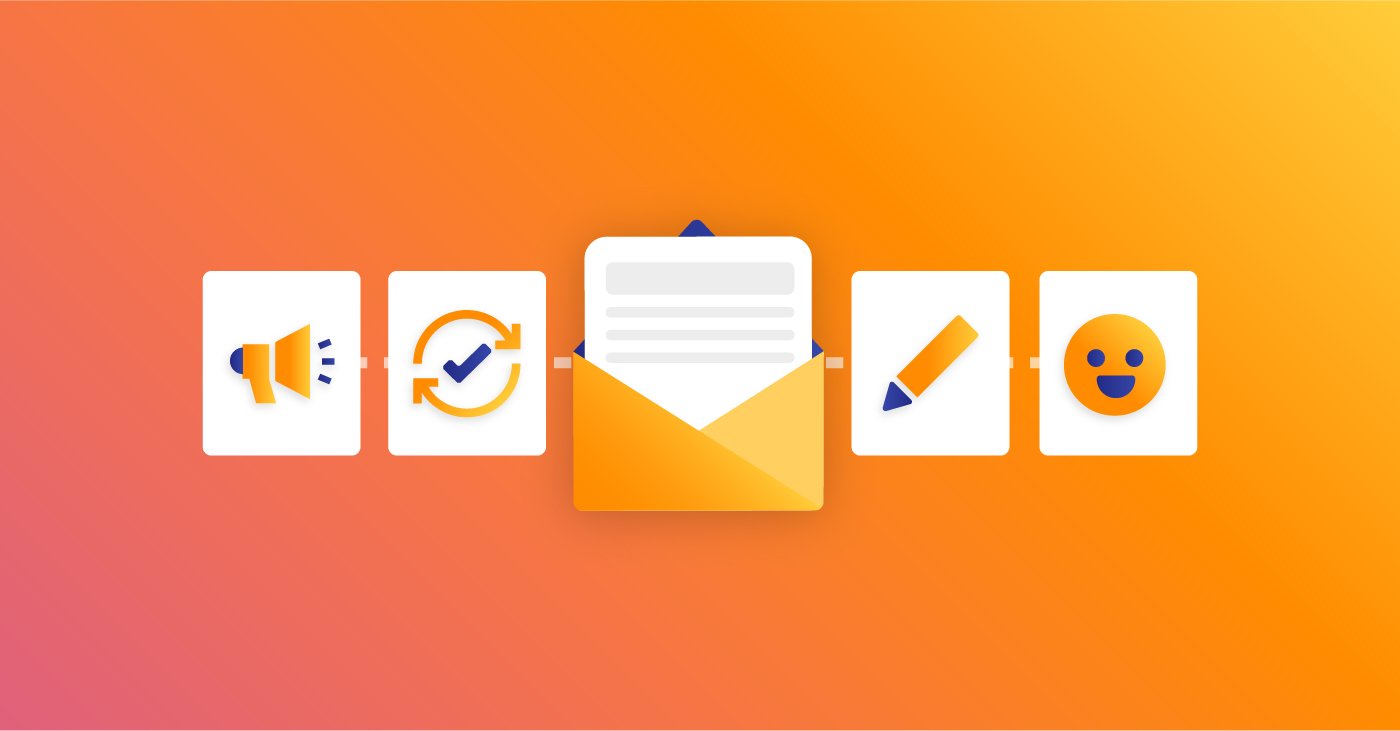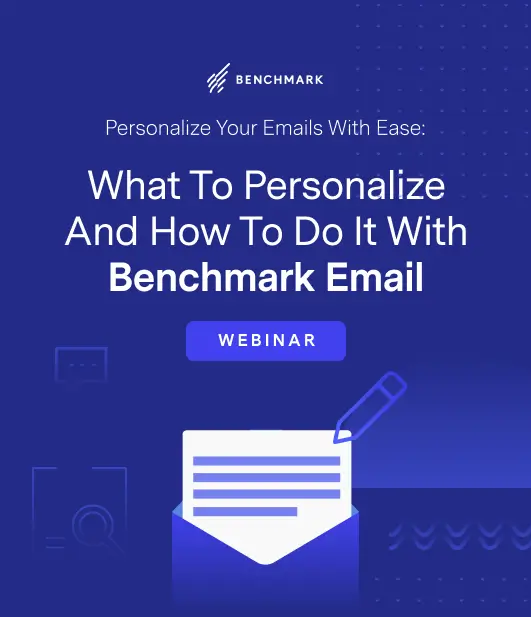What is Hyperpersonalization and What Does it Mean for Email Marketing?
October 6, 2022 5 min read

People receive over 100 emails daily, and I am no exception. Like others, I spend some minutes scrutinizing my inbox, marking some as spam, deleting some outright, unsubscribing from some lists, and even marking some as important so that I remember to pay more attention to them later when I have time.
How do you ensure your business’s email campaigns are not part of the emails the average individual is sending to the bin or blocking as spam? By ensuring it’s the content your subscribers are looking for through hyperpersonalization.
But what exactly is hyperpersonalization?
Personalization and Hyperpersonalization: Are they Different?
Hyperpersonalization is personalized marketing taken a notch higher. Personalization uses data points to gain customer insights and uses customer profiles and characteristics to develop assumptions that help to meet each customer’s unique needs.
Hyperpersonalization employs the three basic steps of personalized marketing – data collection, analysis, and application. Rather than stop there, it leverages advanced technology like Artificial Intelligence (AI), Internet of Things (IoT), and Machine Learning (ML) to gain accurate insights into the specific needs of customers.
As such, it is not just about real-time data for hyperpersonalization. Real-time data is combined with behavioral data across multiple channels and customer touchpoints with the intent of delivering contextualized communication that is relevant to your customers.

Personalize Your Emails with Ease: What to Personalize and How to Do it With Benchmark Email
DOWNLOAD NOWWhy is Hyperpersonalization one of the Biggest Email Marketing Trends?
Hyperpersonalization changes your email marketing game, elevating it and driving even more return, which is impressive, as email marketing already has a high ROI.
Below are reasons hyperpersonalization is and will remain a big email marketing trend:
1. It’s a Goal-Driven Approach
The top goals for every business’s email marketing campaigns are:
- Increase open rates
- Retain current customers
- Grow email list
- Increase click-through rates
- Reduce unsubscribes
Without hyperpersonalization, many businesses find that they fall short on one or all of these metrics. When you implement hyperpersonalization in your email marketing, you provide your subscribers with laser-focused content that meets their needs at the right times.
The results? Engaged subscribers are eager to receive the email communication you send and are more likely to take the desired action, such as downloading a guide, signing up for a webinar, buying a product, or signing up for a service.
2. It Shortens the Sales Process
Buyers respond to recommendations that are in tune with their needs. According to Salesforce, 52% of customers expect offers to be personalized.
You cannot always control the buyer’s journey and how long it takes. However, hyperpersonalization can help you to cut the time and effort it takes for a buyer to reach a buying decision because you are providing content specific to their needs. This reduces the learning period for your customers and, in a sense, cuts right to the chase.
3. It Eliminates Choice Overload
People like having options. However, there is such a thing as too many options. When a buyer is presented with option overload, it can cause delays or even prevent them from buying altogether.
When you recommend products using data collected via hyperpersonalized marketing tactics, you are essentially eliminating the risk of presenting buyers with choice overload, making it easier for them to reach a buying decision. Hyperpersonalization allows you to zero in on exactly what the buyer wants, not 50 iterations of something close. The result? A happy buyer that feels good about their decision because they know they chose the best product or service to fulfill their unique needs.
What You Need to Implement a Hyperpersonalization Approach
Looking to put hyperpersonalization to practice? Here are some things you’ll need to pull it off effectively.
Thorough Data Collection
While personalization focuses on essential details like name, email address, and occupation, hyperpersonalization digs deeper into actions and behavioral data. To effectively hyperpersonalize your emails, you need prospects’ psychographic and behavioral data. Examples of such data include:
- Lifestyle of prospects
- Activities
- The specific pages prospects and buyers have been checking out
- What topics interest them
- What they value outside of their work life
- The specific keywords they use when searching online
- How long they spend on your website, and on which specific pages
- The time of day they visit your website and open your emails
To ease collecting behavioral data, avoid being pushy, so you do not spook your potential buyers. The “when” is important when seeking personal and behavioral data. For example, delay surveys about interests till prospects opt-in for your newsletter.
Furthermore, consider segmenting lists according to the opt-in forms each subscriber fills out. This will allow you to tailor your messages to each segment’s specific needs and ensure you’re identifying any customer trends on the back end, such as content they respond to and links they click through to.
But wait, how do you collect the data you need?
You can collect data for hyperpersonalization manually or automatically.
Manual methods involve asking your prospects directly for various data points. You can use opt-in forms and surveys to get this done; however, this may provide you with psychographic and not behavioral data, and it can take some time since you’re doing it without the assistance of a tool or tech.
Automatic methods, however, will bring everything together in one place. A great tool is Google Analytics. Combine this with a data enrichment tool like Clearbit that will help you make sense of your data. Take it a step further by integrating this approach with a solid CRM like BenchmarkONE to apply collected data to your sales and marketing workflows.
Dynamic Content and Text
Using data collected on prospects and buyers, switch from static content to dynamic content and text. Dynamic content refers to content that changes based on customer behavior, preferences, and data. Dynamic content is popular on websites like YouTube, but you can employ this in your email marketing for contextualized content.
Use data from browsing history, products prospects show interest in, and the time they spend active on your website to generate dynamic content that meets their needs. You can also set up workflows to execute this automatically by employing list segmentation and groups.
Email Optimization
There are 2.87 billion smartphone users worldwide. What’s more, 35% of smartphone users in the US check their phones more than 50 times daily, while 47% say they can’t live without them. If your emails are not optimized for mobile devices as a business owner, you are missing out on communicating with many of your prospects. Also, you’re extremely behind.
It is one thing to craft hyperpersonalized emails, but your campaigns will only be effective if your subscribers get to read the content that’s specific to them. Optimize your email campaigns for mobile devices and viewing to facilitate great communication and content delivery irrespective of the device prospects use to read your emails.
Hyperpersonalization is the future of email marketing. Jump in on the trend by implementing hyperpersonalization on the most ROI-generating marketing channel for business owners, and watch your conversions soar through the roof!






